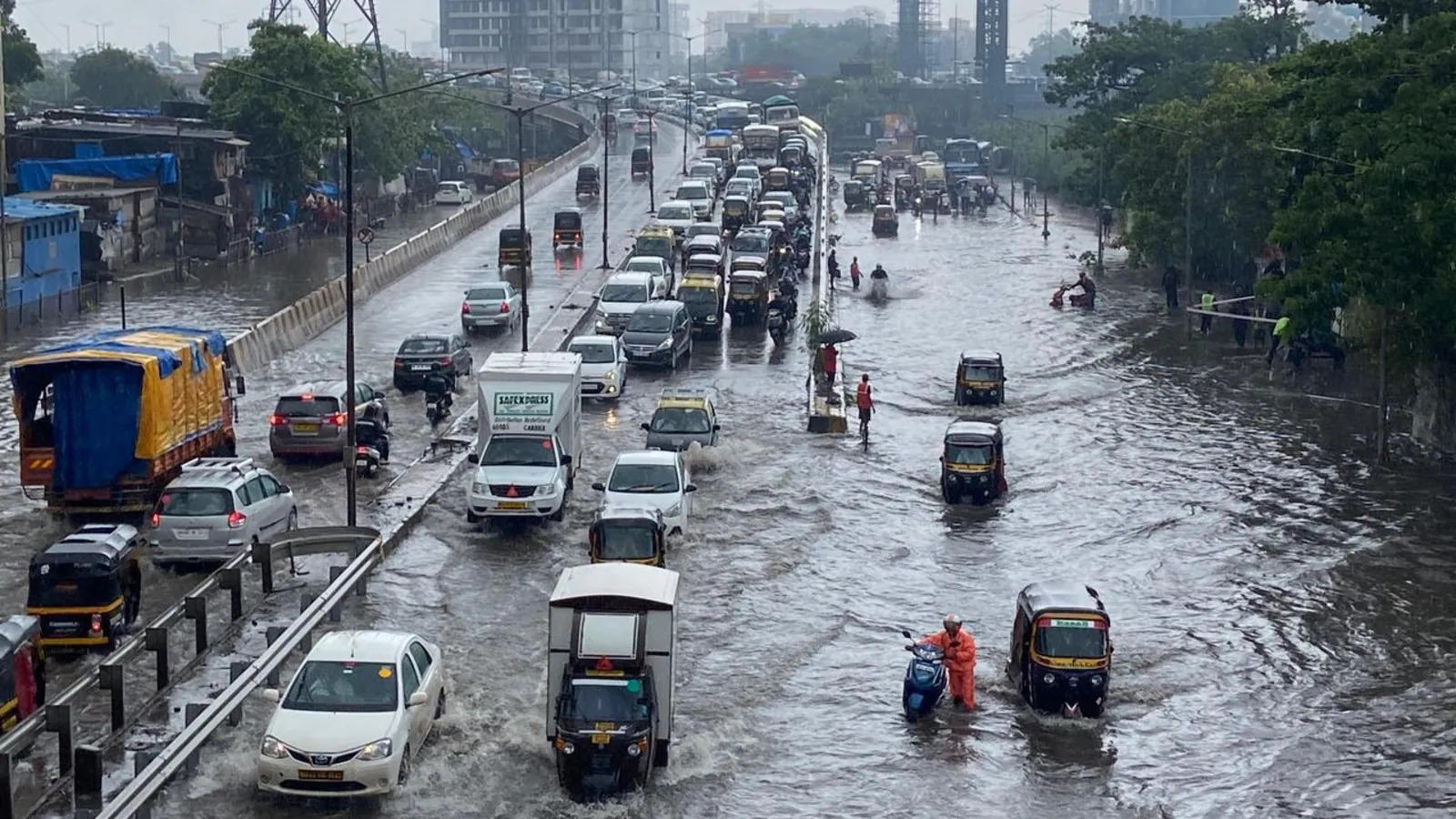Rainfall: Monsoon India as Expected, IMD Issues Orange, Yellow Warning For Many States

In New Delhi: According to the India Meteorological Department (IMD), active monsoon conditions are likely to persist over northwest, central, and west India over the next five days, and the southwest monsoon is predicted to advance into some additional areas of Rajasthan and the remaining portions of Punjab and Haryana over the next two days. It added in a statement that light to moderate widespread to widespread rainfall is anticipated in northwest India during the next five days, providing relief for the parched plains.
"Weather is expected in West Uttar Pradesh, Rajasthan, and Uttarakhand, with sporadic heavy downpours. Rainfall is forecast for Himachal Pradesh from June 27 to June 29, while east Uttar Pradesh is likely to have precipitation from June 29 to July 1, according to the IMD.
Rainfall in Rajasthan is expected to be extremely heavy.
On June 29 and 30, east Rajasthan is specifically expected to have isolated heavy to very heavy rains, while Uttarakhand can anticipate comparable circumstances on June 28 and 30. According to the IMD, "These weather patterns are predicted to offer relief from the region's ongoing dry spell."
Forecast A Little To Moderate Rain In the upcoming days, MP and CG Central India should expect light to moderate, widely dispersed to extensive rainfall. In addition to this rainfall, Madhya Pradesh is likely to have isolated heavy to very heavy falls, thunderstorms, and lightning throughout the course of the next 4-5 days. On the following two days, Chhattisgarh and Vidarbha can also anticipate rain, it said. In addition, the IMD forecasted that west India would have light to moderate widespread to widespread rainfall during the next few days, providing relief from the country's current dry conditions.
"These rains are expected to continue for the next five days across the Konkan, Goa, Gujarat, and the Ghat regions of central Maharashtra. There is a very good chance that Gujarat may have a few isolated, very heavy downpours, especially on June 28. These weather patterns point to a much-needed improvement in the region's water supplies and agricultural output, but they also call for vigilance and preparation for potential significant rainfall events, according to the IMD.
Eastern India Light Showers are Expected In the approaching days, East and neighbouring Northeast India are predicted to enjoy widespread mild to moderate rainfall, offering relief from the ongoing dry spell.
From June 27 to July 8, West Bengal and Sikkim might expect this rainfall. Similar rainfall is forecast for Assam, Meghalaya, and Arunachal Pradesh from June 29 to July 1. The northeastern region can anticipate it throughout the next five days, while isolated heavy rainfall is also anticipated over parts of east India in the following two days.
The ecological balance and support of agriculture in these areas depend on these rainfall patterns, but it's necessary to be ready for potential heavy rainfall events, the statement stated. In the meantime, light to moderate scattered to fairly widespread rainfall is anticipated in south India during the next several days, providing relief from the country's current dry conditions.
"In particular, isolated heavy to very heavy rainfall is possible on June 27 in Mahe and Kerala. From June 27 to July 1, coastal Karnataka will experience sporadic heavy rainfall. Moreover, Kerala should prepare for sporadic additional heavy rainfall on June 30 and July 1. In addition, sporadic heavy rainfall is predicted for Lakshadweep on June 27, according to IMD.
The IMD continued, "These rainfall patterns will assist agricultural activities in the region and help replenish water reservoirs, maintaining the wellbeing of the local inhabitants."
.png)